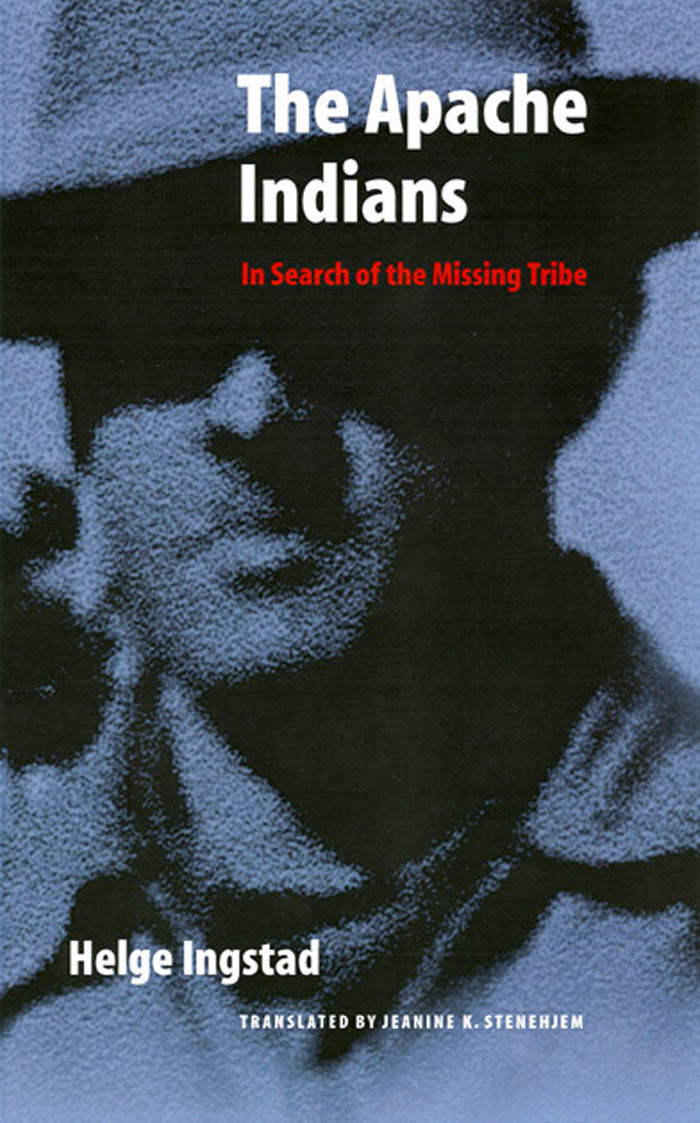 The Apache Indians [First Page] [-1], (1) Lines: 0 to 19 * 410.83003pt PgVar Normal Page * PgEnds: PageBreak [-1], (1) Kim University of Nebraska Press / Page i / / The Apache Indians / Ingstad [-2], (2) Lines: 19 to 26 0.0pt PgVar Normal Page PgEnds: TEX [-2], (2) Kim University of Nebraska Press / Page ii / / The Apache Indians / Ingstad
The Apache Indians [First Page] [-1], (1) Lines: 0 to 19 * 410.83003pt PgVar Normal Page * PgEnds: PageBreak [-1], (1) Kim University of Nebraska Press / Page i / / The Apache Indians / Ingstad [-2], (2) Lines: 19 to 26 0.0pt PgVar Normal Page PgEnds: TEX [-2], (2) Kim University of Nebraska Press / Page ii / / The Apache Indians / Ingstad 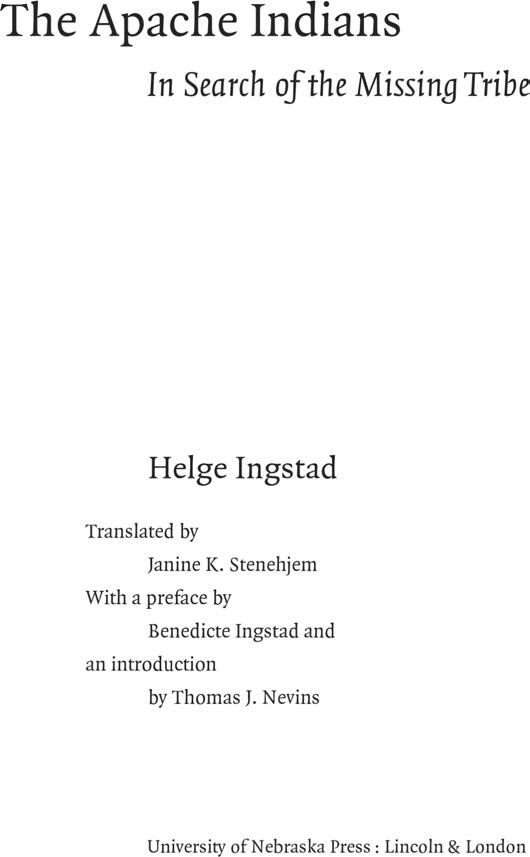 [-3], (3) Lines: 26 to 40 * 47.78935pt PgVar Normal Page * PgEnds: PageBreak [-3], (3) Kim University of Nebraska Press / Page iii / / The Apache Indians / Ingstad Copyright 1945 by Gyldendal Norsk Forlad a/s. Translation copyright 2004 by the Board of Regents of the University of Nebraska. All rights reserved. Typeset in Fred Smeijers Quadraat by Kim Essman. Book designed by Richard Eckersley. Printed by Thomson-Shore, Inc.
[-3], (3) Lines: 26 to 40 * 47.78935pt PgVar Normal Page * PgEnds: PageBreak [-3], (3) Kim University of Nebraska Press / Page iii / / The Apache Indians / Ingstad Copyright 1945 by Gyldendal Norsk Forlad a/s. Translation copyright 2004 by the Board of Regents of the University of Nebraska. All rights reserved. Typeset in Fred Smeijers Quadraat by Kim Essman. Book designed by Richard Eckersley. Printed by Thomson-Shore, Inc.
Manufactured in the United States of America. Library of Congress Cataloging-in-Publication Data Ingstad, Helge, 18992001 [Apache-indianerne. English] The Apache Indians : in search of the missing tribe / Helge Ingstad ; translated by Janine K. Stenehjem; with a preface by Benedicte Ingstad and an intro [-4], (4) duction by Thomas J. Nevins. cm. cm.
Includes bibliographical references. isbn 0-8032-2504-0 (cloth : alkaline paper) isbn 0-8032-0481-7 (electronic) Lines: 40 to 95 1. Apache Indians. I. Title. e99.a61613 2004 979.004'9725dc22 20004011775 * 242.87503pt PgVar Normal Page * PgEnds: PageBreak [-4], (4) Kim University of Nebraska Press / Page iv / / The Apache Indians / Ingstad Contents List of Illustrations vii Preface by Benedicte Ingstad ix Introduction by Thomas J.
Nevins xvii 1. The Long Migration 2. San Carlos [-5], (5) 3. White Mountain 4. Glimpse of the Old and the New Lines: 95 to 150 5. Dance and Prayer 6.
Apache Cowboy Life on the White * 37.62752pt PgVar Mountain Reservation Normal Page 7. An Expedition Is Planned * PgEnds: PageBreak 8. South into Mexico 9. Through the Western Sierra Madre [-5], (5) 10. Nacori Chico 11. Through the Heart of the Sierra Madre 12.
Dramatic Christmas 13. Cave Country 14. Prisoners from the Wilderness Notes Bibliography Kim University of Nebraska Press / Page v / / The Apache Indians / Ingstad [-6], (6) Lines: 150 to 153 0.0pt PgVar Normal Page PgEnds: TEX [-6], (6) Kim University of Nebraska Press / Page vi / / The Apache Indians / Ingstad Illustrations following page 86 1. The century, or mescal, 14. The old Spanish church plant. 2. 2.
Drawings on a cave wall in the western Sierra 15. The Apache girl, Bui, Madre. shortly after being taken. 3. Old Aztec Indian. 16.
The Apache girl, Bui, after [-7], (7) adoption by an American 4. Sunrise dance in Day family. Canyon. 17. The Sierra Madre. Lines: 153 to 223 5.
Mountains and more mountains. 18. Clearings high in the mountains. * 60.96983pt PgVar 6. Cave dwellings near the Chico River. 19.
Cave dwellings along the Normal Page Chico River. 7. Mexican mountain farms * PgEnds: PageBreak of Nortenia. 20. Old cave dwellers storage chambers. 8.
The glistening Aros River [-7], (7) at the bottom of the gorge. 21. Stone home ruins along the Aros River. 9. The old Apache Yahnozah in the Sierra Madre. 22.
Old cave dwellings near the Aros River. 10. Mules drive the grain mill in Nacori Chico. 23. Crossing the Aros River. 11.
Ruins of Spanish church 24. The Sierra Madre, home in Nacori Chico. of the free Apaches. 12. Spanish church treasures. 13.
Apache Yahnozah, Yaqui Indian Mora, and Helge Ingstad. Kim University of Nebraska Press / Page vii / / The Apache Indians / Ingstad [-8], (8) Lines: 223 to 225 0.0pt PgVar Normal Page PgEnds: TEX [-8], (8) Kim University of Nebraska Press / Page viii / / The Apache Indians / Ingstad Preface b e n e d i c t e i n g s t a d When my father, Helge Ingstad, died on March 29, 2001, he was 101 years old. Born on the day before New Years, 1899, he had lived in three centuries. But that was only one of his achievements. He grew up in the Norwegian town of Bergen, from the Middle [-9], (9) Ages an old Hanseatic seaport located between high mountains. His father, Olav Ingstad, was an engineer, and his mother, Olga, was the daughter of a school principal from Troms, in northern Norway.
To Lines: 225 to 255 gether with his elder sister, Gunvor, and his younger brother, Kaare, he grew up in a home with plenty of love and few worries in spite 0.0pt PgVar of a World War brewing farther south in Europe. Outdoor activities, especially skiing, played an important role in the life of this family, Normal Page and when the children needed new skis the father would cut down a PgEnds: TEX tree in the garden and make them himself. As a teenager Helge spent his summer holidays on the mountain [-9], (9) plateau Hardangervidda together with a friend. They would take off for weeks with a tent and a fishing rod and live on what they were able to fish from the many lakes, where trout were plentiful. Here he would also encounter large herds of wild reindeer. This is where his dreams about exploring the wilderness were born.
After finishing high school he told his father that he would like to travel. But his father, whom he held in high regard, managed to convince him to get an education first, so he went off to Oslo to enroll in the university, which was at that time the only one in the country. His grandfather was a professor of law, and Helge decided to follow in his footsteps. After finishing his law degree he established a law practice in Levanger, a town in the middle part of Norway. However, after a few years he got restless. He sold his practice, bought a boat ticket to Canada, and set off to explore what were then unknown Kim University of Nebraska Press / Page ix / / The Apache Indians / Ingstad x Preface patches on a map.
In later life when people asked him what made him give up a prosperous law practice for such an insecure future, he would answer, I was afraid of getting rich and getting stuck. He spent a total of four years in Canada, in the area around the Great Slave Lake. Here he lived by hunting and fur trapping, the life he had dreamed about as a boy at Hardangervidda. First he teamed up with another Norwegian, the older and more experienced trapper Hjalmar Dale. For some time he lived as the only white man with a group of the Chipewyan Indians, and for a whole year he lived all alone with his dog team on the tundra. The adventures of these years were written down in his first book, Pelsjegerliv blandt Nord-Kanadasindianerne (Gyldendal, 1931; Land of Feast and Famine, McGill-Queens [-10], (10) University Press, 1992), for many years a bestseller in Norway.
Sitting around the campfire with the Chipewyans or the Cari bou-eaters as they were called he listened attentively to the tales Lines: 255 to 260 they told. Helge was not only an adventurous young man, fond of nature and rough living, he also had the mind of a scientist. He was fascinated by the life of people who lived in and from nature and 12.6pt PgVar who, in his opinion, had preserved qualities in life that had been lost Normal Page in civilization. He took it upon himself to experience the way of PgEnds: TEX life of these people and to write down as much as possible of what they told him. He was particularly interested in hearing the stories about Chipewyans who had wandered south many years ago, never [-10], (10) to come back. These, he later learned, were the people now called the Navajos and the Apaches, people who even today speak languages that are related to the Chipewyan.
These tales raised his curiosity, and he made up his mind to investigate them. His interest peaked when he was told that a group of Apaches led by Chief Geronimo had escaped some years before from a reservation and made their way south to the Sierra Madre, never to be found. He felt that if he could find these Apaches they would still be in possession of tradi tions and knowledge that might have been lost to the Indians living on the reservation. He was interested in doing a piece of what we today would call ethnographic work by writing down and preserving such knowledge, and he was particularly interested in comparing this knowledge with the information he had gathered among the Kim University of Nebraska Press / Page x / /
Next page
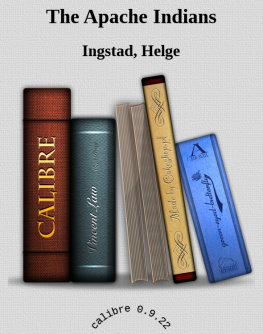

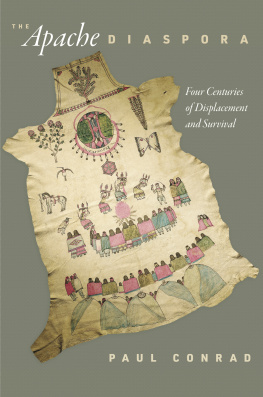

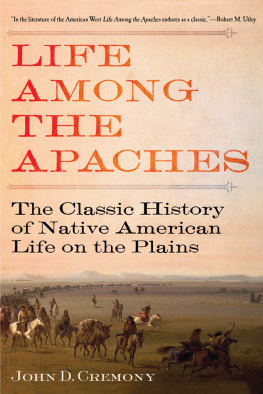
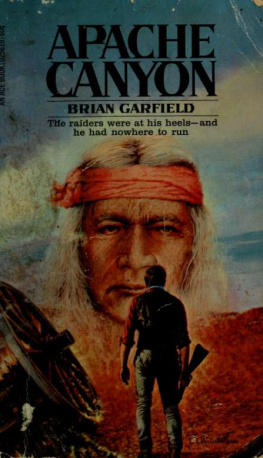
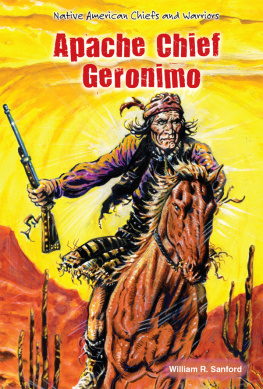
 The Apache Indians [First Page] [-1], (1) Lines: 0 to 19 * 410.83003pt PgVar Normal Page * PgEnds: PageBreak [-1], (1) Kim University of Nebraska Press / Page i / / The Apache Indians / Ingstad [-2], (2) Lines: 19 to 26 0.0pt PgVar Normal Page PgEnds: TEX [-2], (2) Kim University of Nebraska Press / Page ii / / The Apache Indians / Ingstad
The Apache Indians [First Page] [-1], (1) Lines: 0 to 19 * 410.83003pt PgVar Normal Page * PgEnds: PageBreak [-1], (1) Kim University of Nebraska Press / Page i / / The Apache Indians / Ingstad [-2], (2) Lines: 19 to 26 0.0pt PgVar Normal Page PgEnds: TEX [-2], (2) Kim University of Nebraska Press / Page ii / / The Apache Indians / Ingstad  [-3], (3) Lines: 26 to 40 * 47.78935pt PgVar Normal Page * PgEnds: PageBreak [-3], (3) Kim University of Nebraska Press / Page iii / / The Apache Indians / Ingstad Copyright 1945 by Gyldendal Norsk Forlad a/s. Translation copyright 2004 by the Board of Regents of the University of Nebraska. All rights reserved. Typeset in Fred Smeijers Quadraat by Kim Essman. Book designed by Richard Eckersley. Printed by Thomson-Shore, Inc.
[-3], (3) Lines: 26 to 40 * 47.78935pt PgVar Normal Page * PgEnds: PageBreak [-3], (3) Kim University of Nebraska Press / Page iii / / The Apache Indians / Ingstad Copyright 1945 by Gyldendal Norsk Forlad a/s. Translation copyright 2004 by the Board of Regents of the University of Nebraska. All rights reserved. Typeset in Fred Smeijers Quadraat by Kim Essman. Book designed by Richard Eckersley. Printed by Thomson-Shore, Inc.